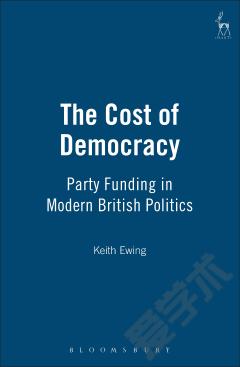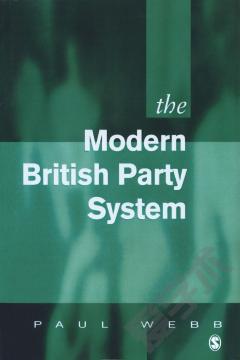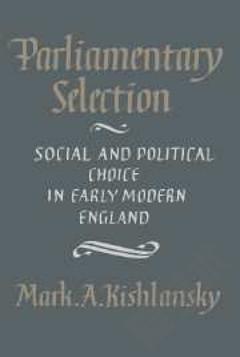The Cost of Democracy —— Party Funding in Modern British Politics
----- 民主的腐败:现代英国政治中的政党募资
Preface 1 A Drama Unfolds Introduction The Conservative Funding Legacy The 'Arms Race' The Labour Party's Response Questions for the Labour Party The Ecclestone Affair The Neill Committee Conclusion 2 Regulatory Objectives The Prevention of Corruption and Conflicts of Interest Equality of Opportunity and Fair Competition for Political Office A Need to Ensure that Political Parties are Adequately Funded Promoting Citizen Participation in the Funding of Political Parties Respect for the Nature and Diversity of Party Structure The Protection of Human Rights Conclusion 3 Regulatory Methods Introduction Transparency and Disclosure Contribution Controls Spending Controls State Aid and Public Funding Self-Regulation or State Regulation? Supervision and Enforcement Conclusion 4 Party Autonomy and Public Accountability Introduction Diversity of Party Structure The Principle of Party Autonomy Autonomy of Party Organisation: The Role of Legislation Autonomy and Legality From Autonomy to Accountability: Registration and Party Identity State Supervision: Registration and Financial Accountability Conclusion 5 Donations to Political Parties: The Regulatory Framework Introduction Disclosure and Corruption Who May Donate to Political Parties? The Mechanics of Reporting and Disclosure Who Does Donate to Political Parties? The Problem of Avoidance Loopholes in the Regulatory Framework Conclusion 6 From 'Sleaze' to 'High-Value Donors' to Loans Introduction 'Sleaze': The Continuing Problem of Political Donations The Labour Party's Response 'High-Value Donors': The Labour Party 'High-Value Donors': The Conservative Party The Loans Affair: A New Problem Erupts Implications and Consequences of the Loans Affair Conclusion 7 Spending Limits in Election Campaigns Regulatory Challenges The Victorian Legacy: Candidate Limits The Problem of Third Parties Spending Limits on Political Parties Calculating and Enforcing the Limit Spending Limits and Third Parties Spending Limits in Practice - The First Cycle The General Election 2005 Conclusion 8 The Role of the State: Supporting Candidates and Political Parties Introduction Regulatory Challenges Responsibility of the State Meeting the State's Responsibility Party Political Broadcasts: Transferring the State's Obligations New Forms of State Support Proposals for Additional State Support Reluctance and Resistance to Change Tax Relief - A False Trail Conclusion 9 Lessons from Canada Introduction Political Parties in Canada The Election Expenses Act 1974 The Parties and their Funds Bill C-24, Political Donations and State Funding The Impact of Bill C-24 Bill C-24 and Party Structure Conclusion 10 Building on PPERA Introduction The Next Step - Regulatory Objectives The Problems with Contribution Limits Donations - Let the Members Decide A Focus on Spending State Aid: Building on the British Model? Making a Fresh Start - Back to Houghton Qualifying Conditions for State Support Promoting Democracy: A Quid Pro Quo Conclusion Appendices Appendix 1: Exchange of Letters between the Labour Party and Sir Patrick Neill QC Appendix 2: Annual Accounts of the Political Parties Appendix 3: The Structure of the Labour Party Appendix 4: From Election Funding to Political Funding in Germany Appendix 5: State Funding in Sweden - Party Autonomy and Public Funding
{{comment.content}}








 京公网安备 11010802027623号
京公网安备 11010802027623号